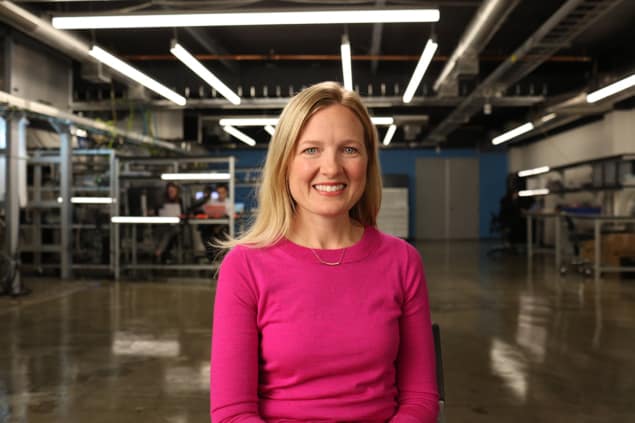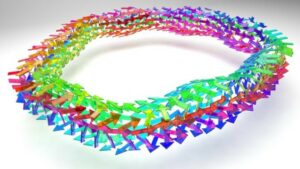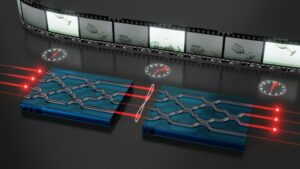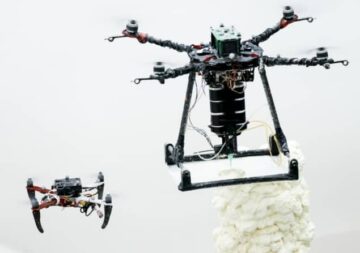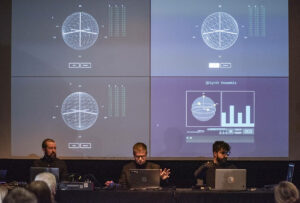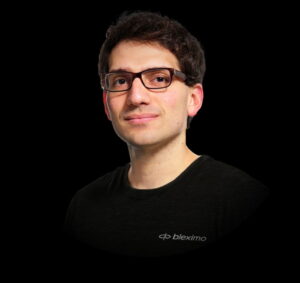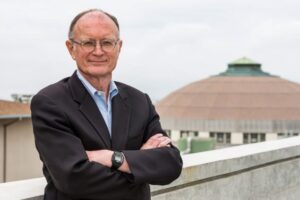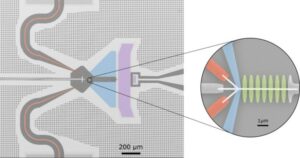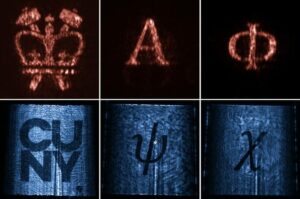Krysta Svore, vice-president of Microsoft Quantum, talks to Tushna Commissariat about the company’s journey to quantum advantage
Across the globe, small and large firms alike are racing to develop and launch computing technologies based on quantum physics. While the basic principles have been in place for a few decades, researchers, industry and governments are all working towards building and scaling up practical quantum computers, with US tech firm Microsoft a key player.
Earlier this year, distinguished engineer and head of Microsoft’s Quantum team, Krysta Svore, delivered a keynote at The Economist magazine’s Commercializing Quantum event in London. She later caught up with Physics World to discuss the firm’s pathway towards a scalable quantum system – from topological qubits, to Microsoft’s Azure quantum cloud-computing platform and hybrid partnerships, to the quantum marketplace as a whole.
What is Microsoft doing in the quantum world right now?
One of the questions we’re considering is how to accelerate the journey to quantum advantage. What I mean by quantum advantage is, first of all, that we want to be able to solve problems that are meaningful and will help move our society forward. I have a daughter, and I want to change the future for her – I don’t want to leave her these Herculean challenges related to sustainability, climate change, energy and finding better ways to use the resources on our planet.
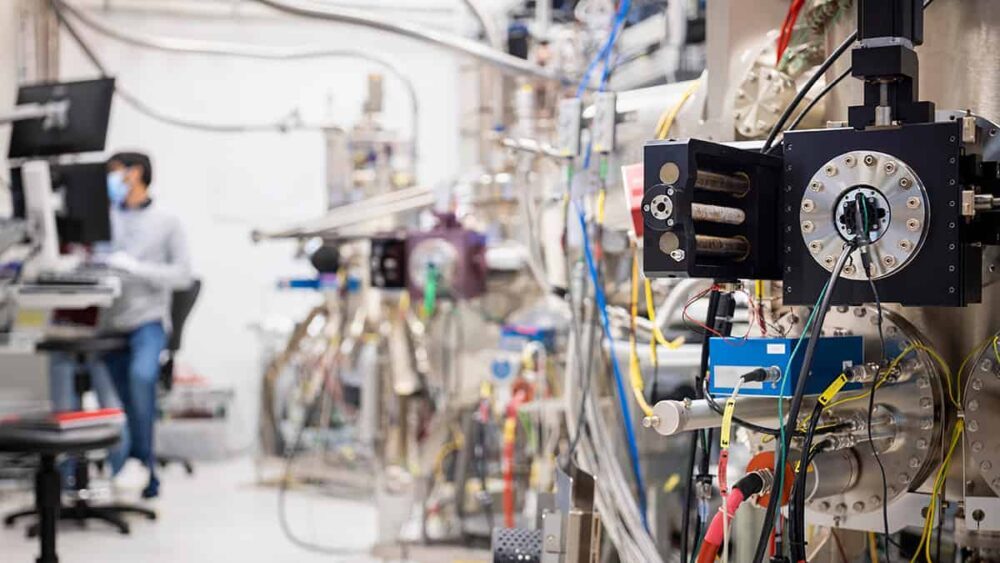
With quantum computing, there’s hope that we can start to address some of these problems, but we’re not going to be able do it with a quantum computer as a standalone machine. To work out how to improve nitrogen fixation, or capture carbon dioxide and convert it to methanol, for example, you really need a hybrid solution, one that integrates quantum computing into a classical supercomputer. So that’s what we’re building at Microsoft with our cloud-computing Azure system. We’re aiming to produce a hybrid, heterogeneous, AI-powered, quantum-powered supercomputer that will bring forward solutions for these types of problems.
We’re also thinking about our software platform. We’ve been studying quantum algorithms for years, so we’ve taken what we’ve learned about how to optimize and compile them, and brought that knowledge to our platform. Right now, with Azure, you can try out small problems on a diverse set of real hardware that is supplied by our various partners. But you can also write applications, develop your code, decide how big a quantum computer you’ll need and work out how it will operate alongside a classical one. You can perform that integration and begin debugging the code now, because that code will remain valid as the machines scale up and become fully integrated with the cloud.
What’s your vision for how we get to a scale where we can do something meaningful with a quantum computer?
Microsoft has been thinking about scale from the beginning. We’ve studied quantum algorithms; we’ve studied the physics; we’ve worked on the whole system architecture from software to hardware. And what we’ve learned about scale is we need to be asking something different of our qubits and of our quantum machine.
Over decades of research, we’ve identified that a successful machine needs three key characteristics. First, it needs to be the right size. The qubit needs to be small enough that you can fit a million on a wafer, so that the machine is not going to end up being the size of a skyscraper. Next, it needs to be the right speed. The machine needs to be fast enough that when you run billions of operations, all of them can be complete in a matter of weeks, such that we don’t wait more than a month for the full end-to-end solution combining classical and quantum elements. Finally, we need a qubit that’s reliable enough as we scale up; one that won’t consume as many resources because we’re taking advantage of natural, intrinsic qubit properties to correct errors. That’s what will allow us to run billions of operations.
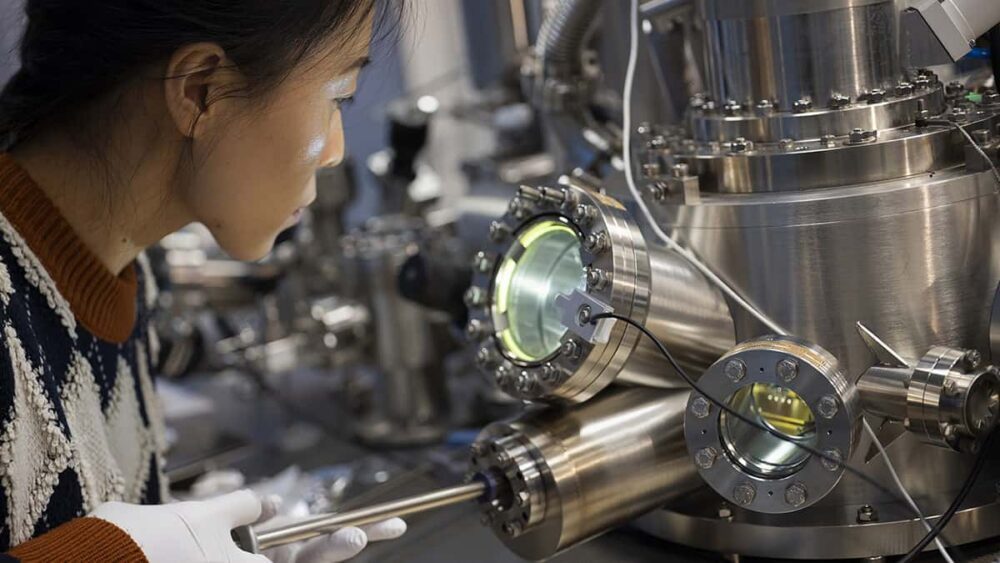
At Microsoft, we’ve identified and designed a qubit that we feel is just right on all those counts: the topological qubit. And within the last few months, we’ve shared some really exciting progress we’ve made towards creating this qubit. In essence, we’ve engineered devices that demonstrate this very elusive physics that’s been hypothesized about for a century, whereby so-called Majorana zero-modes emerge at the end of nanoscale wires. This is a signature of the type of physics we need to demonstrate a topological qubit, so it’s a very significant milestone both for science and for building the foundation we need to say, “Okay, we will reach a million qubits.”
Tell me more about this topological qubit. What’s it like when it comes to robustness? Does it need to be at cryogenic temperatures?
Yes, it operates at cryogenic temperatures, so in that respect it’s very much like some other qubits in the industry, such as superconducting qubits. It’s in a dilution refrigerator, and 100 mK is roughly the temperature range. In terms of robustness, this is something we’ll be working on for our next demonstration. What we’ve shown so far is the underlying fundamental physics and the properties of Majorana zero modes, but now we need to create a qubit out of that. By that I mean something you can perform operations with; something you can control and read out. Once we do that, then we’ll be able to measure it and say, “Okay, here’s its lifetime. Here’s how coherent it is.”

But what’s wonderful about the topological qubit – and the reason we’re so invested in it – is that it has this natural error protection that we believe will help it scale. This property stems from the fact that the information the qubit encodes is, in a sense, split across four Majorana zero modes, one at each end of two nanowires. If nature tries to disturb just one of those Majorana zero modes, it won’t actually hurt the quantum state. In contrast, with a superconducting qubit, the quantum state is held at a single point, so if you get noise at that point, the state decoheres. Unlike that, we have a degree of error correction or fault tolerance that is built into our topological qubit.
At what point will you be able to run a problem on, say, Microsoft’s topological qubits and then repeat the experiment using a different type of qubit, and ensure we get the same output?
I love where you’re headed with this, and I’m happy to tell you that we can do that today. In fact, that’s part of the beauty of Azure Quantum – it offers people the chance to run the same code on multiple quantum computers, through the cloud service we have. You can write a single piece of code – maybe it’s a small instance of Azure’s algorithm, maybe it’s the quantum equivalent of “hello world” – and run it on hardware developed by companies such as Quantinuum and IonQ. Those are both ion trap platforms, but we’re also partnering with Quantum Circuits Inc. (QCI), which uses a superconducting qubit platform, and we have a silicon semiconductor-based superconducting qubit platform from Rigetti Computing and a neutral-atom quantum-processor platform from Pascal, both of which will be coming online soon.
So that’s five different quantum-hardware platforms available through Azure, and what’s really neat is the flexibility you have with the code. You can write your quantum algorithm in Q#, which is a high-level language for algorithm development. That would be my choice, but you can also come in with your own codes. For example, if you’ve previously run your problem on one of IBM’s devices and you have their Qiskit code already written, then you can simply execute that code too on our system. You can select any one of the five hardware platforms and it’ll compile the code for you to whichever “back end” you choose.
That means you can run the same application on all those back-end devices and see how it behaves. Because of course, these devices have different architectures, different connectivity and even different operation speeds and fidelities. Through Azure, you can learn all about those differences and similarities.
Are you planning to bring in additional hardware platforms?
Yes, we really believe in democratizing quantum computing by bringing the community in to grow the ecosystem. Much of our code and platform tools are open source, and as well as multiple hardware providers, we have a whole variety of simulators coming from our partners. These are programs that help you work out how your code will run on a given hardware platform, before you execute it. We also have what are called resource estimators, which you can use if you want to know how much an algorithm is going to cost you to run once the machines scale up, or how big a machine you’ll need.
A further exciting development is something we call Quantum Intermediate Representation (QIR), which allows you to take any high-level language (choose your favourite), map it to QIR and send it to any number of back-end providers. We see this as an important layer in the global software stack, as it’s something that facilitates an ease of translation or mapping onto different hardware.
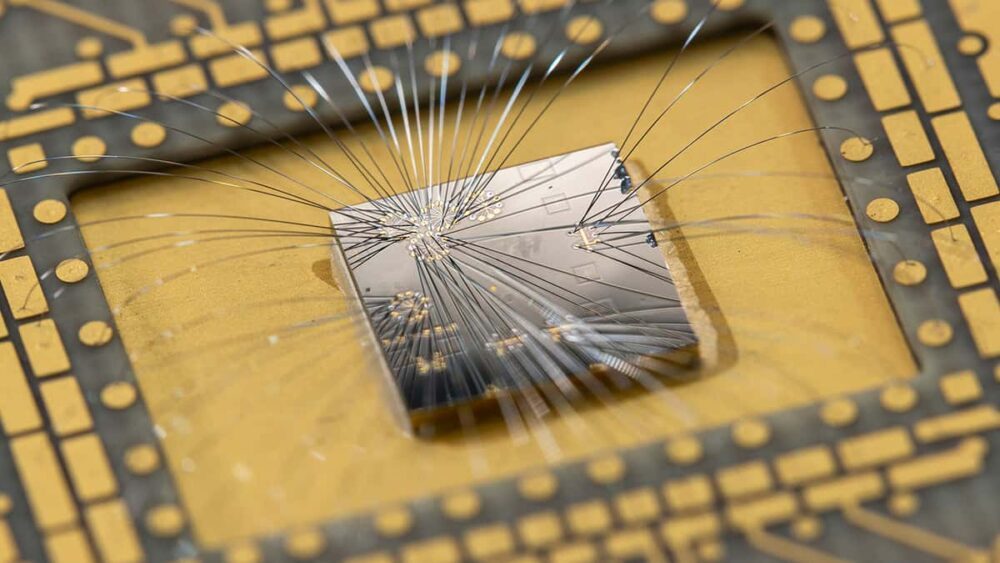
You can think of QIR as a universal mid-layer language that enables communication between high-level languages and machines. Many organizations have adopted it already. It’s been developed as part of an alliance through the Linux Foundation’s Joint Development Foundation. In fact, QCI, Quantinuum, Rigetti, Nvidia and Oak Ridge National Laboratory have all announced that they’re going to build their compilers through QIR.
And it’s all part of what’s called LLVM, which is a very popular classical compiler framework, so it allows you to leverage compilation and optimization tools from the classical computing industry. That really cuts the cost of writing translations. Otherwise, you would have to write new code for every language to every back end, which would be very expensive.
The quantum marketplace is at an interesting stage right now. It seems like every week, there are new quantum companies launching, but this massive boom phase is taking place before the technology has really established itself. Are you worried that there’s going to be a bust?
I believe that we need many, many minds at the table to advance this technology and to accelerate our progress. Traditionally, with this type of technology, advances would be measured in decades. Just think of the time it took to go from the invention of the transistor to having cell phones and iPhones. We don’t want that with quantum computing. We want to speed it up.
I believe that we need many, many minds at the table to advance this technology and to accelerate our progress
The good news is that we have huge advantages – we already have software and classical computers. Our predecessors didn’t have the ability to model what they were doing when they were moving from vacuum tubes to transistors to integrated circuits. They didn’t have classical computers to help them, whereas we have them at our fingertips. When I see the ecosystem grow – more companies, more start-ups, more university degree programmes – I view it as exactly what we need.
So instead of being focused on whether there will be a bust or a “quantum winter”, I focus on engaging those thought leaders, bringing those innovators to the table and democratizing quantum so we can get solutions out quickly. If we are showing progress, there will be no quantum winter, and I believe that we can make that progress across all areas, from devices and machines to software and apps.
Do you have a date in mind for “Q-day” – that is, the day the first practical computer comes online?
Quantum computers are already online. They’re in Azure and you can access them. But the rate at which we scale up and reach quantum advantage depends on everyone engaging and jumping in. At Microsoft, we’re running as fast as we can to scale up the machine and scale the platform, but we’re also dependent on people developing algorithms that require fewer qubits – perhaps by jumping in and using QIR to create a better compilation stack. Progress is about making a difference from both ends, improving the machine as well as bringing the cost of algorithms down. That’s what will change the timeline and hasten the day when we’ll see practical quantum advantage.

